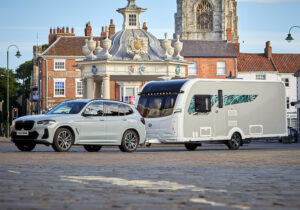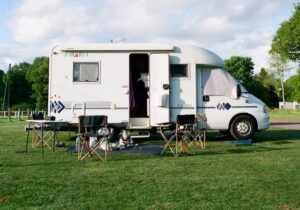Dan Cartwright has over 12 years of experience in the caravan and motorhome industry. He is a judge for a number of prestigious leisure vehicle awards and regularly heads off in his motorhome with his family. Every week, Dan shares his insights with the community. Here’s what he has to say this week.
There are a lot of misconceptions about caravanning, from both people within our community and those on the outside. We all know that heading off in a leisure vehicle can provide incredible holidays and a fantastic opportunity to get away at the drop of a hat, but some people might be put off if they were to believe the stigma. Let’s take a look at some of the common mistakes people make when it comes to caravans.
Towing and reversing are extremely difficult
I can’t tell you the number of times I’ve been towing a caravan and jumped out of my skin after taking a glance in the mirror and thinking I was getting rear-ended by a truck. That’s to say, towing is so easy you could actually forget you’re doing it! There are some really great towing courses out there and I even attended one at the Caravan and Motorhome Club. Not only do they teach you skills and techniques, but also instil confidence.
Reversing with a caravan is like anything in life: practice makes perfect. You wouldn’t put a 17-year-old learner driver in a car and expect them to nail parallel parking every single time. But give them a few months of experience and it’ll suddenly become second nature to them. It’s the same with a caravan – 90 per cent confidence, 10 per cent ability.
Caravans leak
While many years ago this might have been a fair statement, it’s simply not true anymore. Of course, there will be certain times when water ingress can occur for multiple reasons, however the outdated opinion that all caravans leak is no longer reasonable. The way modern motorhomes are constructed has been revolutionised over the last 15 years, with lots of new material design principles and rigorous testing. Usually, if a leak does occur, it’s because the shell has been damaged. Overall, caravans are absolutely not leaky.
Caravans are cold
If you’re reading this on the date of publication, you’re probably experiencing daytime temperatures around -1 degrees celsius. Caravans of the past were indeed cold and, having spent many of my childhood years in an old caravan, I can testify to that. But, modern versions are highly insulated, with huge improvements to both blown air and wet central heating systems. They’re also submitted to NEC Grade 3 testing, either through calculations or a physical cold chamber. Caravans that pass are able to raise all four corners from -5°C to 25°C in less than three hours – that’s far quicker than any home. New models are built to extremely high standards, with modern methods to ensure heat is retained well.
Caravanners are weirdos
Well, that might be a bit harsh, but there’s a common stigma that caravanners are a bit too eccentric. That’s not the case! It’s an amazing way for you to enjoy activities and some of the coolest people in the world all head out in their motorhomes. Rockstars, F1 drivers, motorcycle racers… The list could go on and on. Why do they hit the road? Because caravans are effective, practical and comfy. You can go wherever you want, whenever you want. So, pitch up on site and be surprised by quite how interesting the caravanning community is.
All caravans are big white boxes
Like a good box of chocolates, caravans come in all shapes and sizes. Teardrop, bubble, oblong – there’s so many variations other than the traditional white box. Today, there are an array of manufacturers, unlike back in the day where if you didn’t want a cube, your only option was to buy an Airstream. Additionally, caravans are now specialised for leisure activities and different designs offer varying access options.
So, if you’ve ever been tempted to try caravanning but have felt put off by one of these outdated misconceptions, try it now! There’s no need to make a big commitment, as there are lots of rental companies for touring caravans. Give it a go – I think you’ll be pleasantly surprised and it would make an excellent Christmas present.
Photo credit: Engin Akyurt / Pexels




